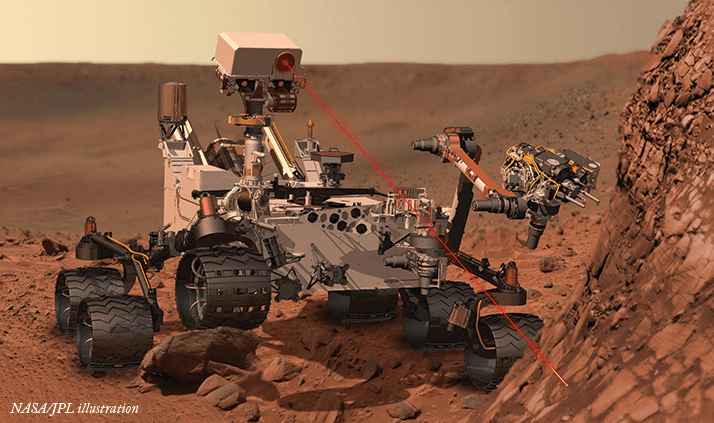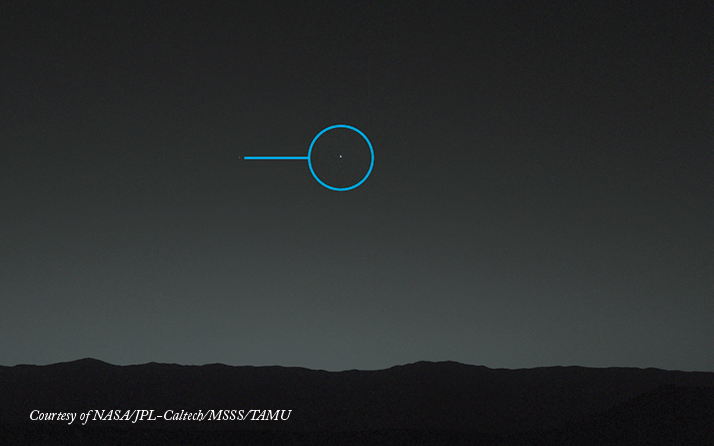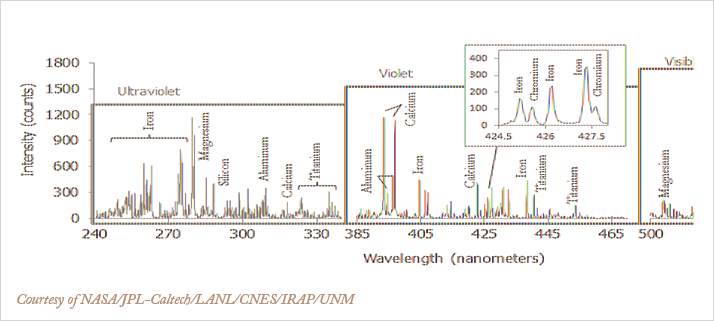NASA’s Curiosity Rover (Figure 1 (a)) recently raised its head (camera) to the night sky to take its first photograph of Earth from the surface of the Red Planet (Figure 1 (b)). The picture postcard shot strongly evokes the words of Carl Sagan: “From this distant vantage point, the Earth might not seem of any particular interest. But for us, it's different. Consider again that dot. That's here. That's home. That’s us. On it everyone you love, everyone you know, everyone you ever heard of, every human being who ever was, lived out their lives.” – Pale Blue Dot: A Vision of the Human Future in Space.


But, apart from snapping photos of Earth and taking “selfies,” has Curiosity provided any analytical insight? Towards the end of 2013, Curiosity passed the milestone of 100,000 “zaps” of its ChemCam laser ablation breakdown spectroscopy (LIBS) instrument. The landmark infrared laser blast was fired from distance of 4.04 meters at a rock called “Ithaca” (naming rocks on Mars is a bit of a pastime for NASA – tas.txp.to/0214/rocks). Each pulse delivers more than one million watts of power for a tiny fraction of a second – roughly five one-billionths. The resulting plasma spark is observed by ChemCam’s “telescope” to gain spectroscopic information about rock composition (see Figure 1c). The international team pouring over the resulting data is interested in learning about the diversity of materials inside Mars’ Gale Crater and the geology involved in their formation.

To learn more about LIBS, please see “Beginning to See the Light”.




